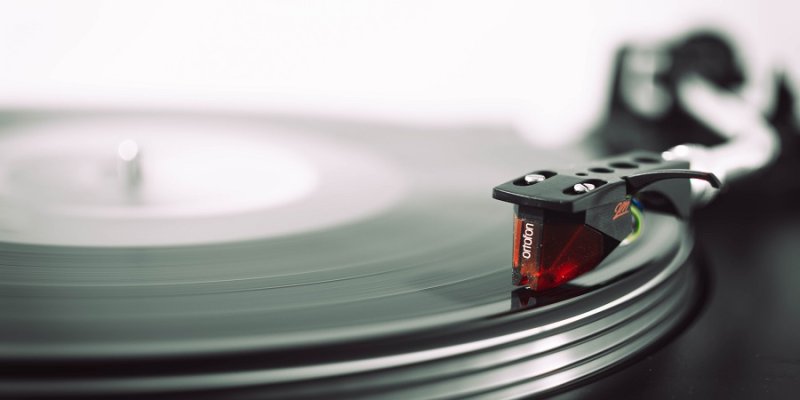
If you are reading this, you probably have a new-found or existing respect for vinyl records and all that they have to offer. Truly, vinyl is making huge strides in renewed popularity, partly because of a format that allows listeners to enjoy an emotional connection with the experience of listening to warm sounds generated by oversized discs housed in colorful covers. While the appeal of owning a vinyl collection, large or small, varies in importance according to the collector, the methods for buying, transporting, playing, and storing are relatively set in stone. Keep reading to learn more about how to preserve your music collection for many years.
Getting Started with Your Collection
Older vinyl records are easy to come by these days. Other than Music Row, you can find them at yard sales, record stores, and thrift shops. Most of the time you don’t even need to spend much money on them. However, buying a good record takes a little bit of know-how if you want to add playable, quality albums to your collection. You need to contain your excitement over finding a nearly pristine sleeve of “Love Me Do.” Make sure to check the record for signs of imperfection, including ground-in dirt, scratches, chipped edges, and grooves.
Checking the condition of a vinyl record begins by carefully taking it out of the cover and visually inspecting it. While dust is to be expected, ground-in dirt is not. Use these tips to avoid problems:
• Look for scratches, grooves, and chips by running your finger along the record.
• Even if the record comes up relatively smooth, you should take the time to listen to it and see if it plays cleanly enough for your ear.
• It is a good idea never to purchase a dirty disc if you can possibly avoid it. Ask if the shop has a cleaning machine and run the album you are considering through it at least once. Doing so makes it easier to identify imperfections in the copy.

Places to Buy Vinyl Records
If you are looking for a good place to purchase vinyl, you may want to consider:
• Record shops
• Second-hand shops
• Book sales
• Garage sales
• Discogs.com
The first three choices are perfect for older, used copies. These are the types of places where you can find an album that you need to complete your collection of a particular artist. On the other hand, the last two listings offer excellent options for sourcing new vinyl. Of course, you can always check out vinylhub.com to find even more stores and websites to shop for the newest additions to your music collection.
Avoiding Bootleg Versions
Unless you are in the market for bootleg copies, almost nothing is worse than coming home with a great find only to discover the record is a fake. The best way to avoid this scenario is to learn to recognize a bootleg copy so you don’t accidentally buy one in your excitement. Bootleg copies of vinyl records typically fall short in the weight category, and they usually have an unbelievably low price tag. When in doubt, put it back.

Handling Your Records with Care
Vinyl records are easy to damage. You can scratch, crack, chip, and warp an album in less time than it takes to place it on the turntable. All you need to do is accidentally drop it, place it on the record player before cleaning it, or store it improperly to damage it. Album covers are even more difficult to keep in pristine shape, particularly because they are highly susceptible to scratches, tears, dents, and stains.
Handling your music collection with care using the following tips can help to preserve their good looks and excellent sound performance on your turntable :
• Minimize heat exposure – Store your records in an area with a temperature between 59°F and 77°F
• Eliminate the risk of pressure – Never stack your records on top of each other, even if you are trying to organize and declutter your home.
• Minimize exposure to rapid temperature changes – Organize your music in an area offering relatively stable temperatures, such as climate controlled storage.
• Avoid exposure to light – Keep your vinyl collection away from bright light.
• Stay away from vibrations – While the Beach Boys may have loved pickin’ up good vibrations, your music collection will hate this type of experience. Store your records far away from any area likely to undergo some type of vibration, including stairways and appliances.
• Embrace dividers – Separating your records with dividers minimizes the risk of damaging the covers when you slip your albums in and out of storage.
• Minimize humidity exposure – Store your collection in a dry area offering 40% relative humidity or less.
If, at any point, you need to move your music collection from one living space to another, do so carefully. Use plastic sleeves to protect the record before putting it inside of its cover as well as to keep the album cover safeguarded from harm.
Tips for Organizing and Storing Your Collection
Storing your records properly is essential if you want to maintain their playability and their quality of sound. For many years, milk crates have been the preferred storage method for personal collections. Not only are they inexpensive to buy, but they are also the ideal size to organize albums. Unfortunately, milk crates do not make good storage options for the following reasons:
• Flexible construction increases the likelihood of warping
• Sharp edges promote damage to album covers
• Open-air exposure encourages dust and dirt build-up
User-friendly options to declutter your storage of record albums include:
• Storage carts for vinyl records
• Shelving built to withstand heavy weight
• Enameled-steel cubes
• Designed-with-vinyl-in-mind furniture, including turntable cabinets and record player stands
Once you’ve picked out the correct storage or shelving unit for your records, it’s important to take the time to organize them. An efficient organizational method is key in making sure that you can locate individual LPs as your collection continues to grow. It can also help you show off your collection in an aesthetically pleasing manner.
Here are are some tips for organizing and displaying your records like a pro:
• Organize by intrinsic or monetary value
• Alphabetize them by band or album name
• Organize them by genre
• Order them chronologically

Maintenance tips such as cleaning the records and turntable itself
Not only is it important to store your record collection properly, but you also need to care for it well. Before you begin playing your albums, take a few minutes to check them out visually. A dirty record certainly isn’t going to play well on your turntable, and it may even sustain damage while you are listening to it. Use one of the following options to eliminate pressing residue and dust from your vinyl records:
• Carbon-fiber brush – gently brush the dust off the record
• Record-cleaning machine – follow the directions accompanying the machine
• Wood glue – allow a thin coat of wood glue to dry on the record and slowly peel it off
Don’t forget about the stylus needle of your record player, because you also have to keep it clean in order to avoid damaging your records inadvertently. Use one of the following to do so:
• Stylus brush – gently brush the stylus from back to front
• Stylus pillow – gently place the stylus needle into the pillow
• Ultrasonic cleaner – follow the directions accompanying the ultrasonic cleaner
Whether you are preserving vinyl as a collector or as a practicing musician, there’s a right way to do it. Truthfully, though, there is a learning curve in learning how to properly care for vinyl records. After all, this isn’t a practice that most households indulge in anymore. Nonetheless, if you are going to take the time to build a fantastic collection of albums, you may as well strive to maintain their value by using tips for the proper care of your records and turntable. Via REDFIN
Reviews - Interviews - Promo - Radio Play
Contact zach@metaldevastationradio.com












